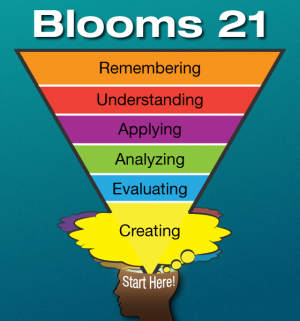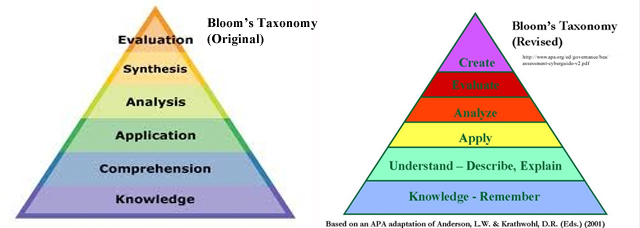Their conclusion was that taking the lectures out of the classroom and into the Internet, allowed for more learning. Due to the lack of publicity, few people heard of this research. You Tube wasn’t born until 2005, and when Jonathan Bergmann and/or Aaron Sams came up with the term flipped learning in 2007, it went viral.
What flipped learning does, is to turn the taxonomy upside down to look like this.
 If you start with the creating, the remembering will naturally follow. We do this in ESL classes all the time. This model can be particularly useful for ESL students as class time is used to explore and apply ideas and practice language with their peers. Fill in the blank activities, videos, grammar points, and writing revisions can be done at home.
If you start with the creating, the remembering will naturally follow. We do this in ESL classes all the time. This model can be particularly useful for ESL students as class time is used to explore and apply ideas and practice language with their peers. Fill in the blank activities, videos, grammar points, and writing revisions can be done at home.
This can create a more interactive, student-centered environment, with students having prepared vocabulary and background information before the lesson.
It is by no means a short cut. The flipped model requires preparation in terms of recording video tutorials or researching appropriate media resources to meet the proficiency level of ESL students. However, there are many publisher textbooks which are utilizing a large number of these resources with their lessons. These resources are ideal to use in the flipped classroom. Ultimately this would allow for more interaction time in the class.
My thoughts are that you start with the creating and the learning will follow. That is what “flipped learning” is to me. So I am all for it! What are your thoughts?
The Community College level workshop at CATESOL is on “Flipped Learning.” We invite you to join in on the discussion on Saturday from 1:15-2:15 at San Diego Town and Country Resort.
Resources
MindShift post Flip This: Bloom’s Taxonomy Should Start with Creating – May 2012
Susan Gaer is an ESL Professor and Basic Skills and Instructional Technology Coordinator at Santa Ana College School of Continuing Education.

 If you start with the creating, the remembering will naturally follow. We do this in ESL classes all the time. This model can be particularly useful for ESL students as class time is used to explore and apply ideas and practice language with their peers. Fill in the blank activities, videos, grammar points, and writing revisions can be done at home.
If you start with the creating, the remembering will naturally follow. We do this in ESL classes all the time. This model can be particularly useful for ESL students as class time is used to explore and apply ideas and practice language with their peers. Fill in the blank activities, videos, grammar points, and writing revisions can be done at home.